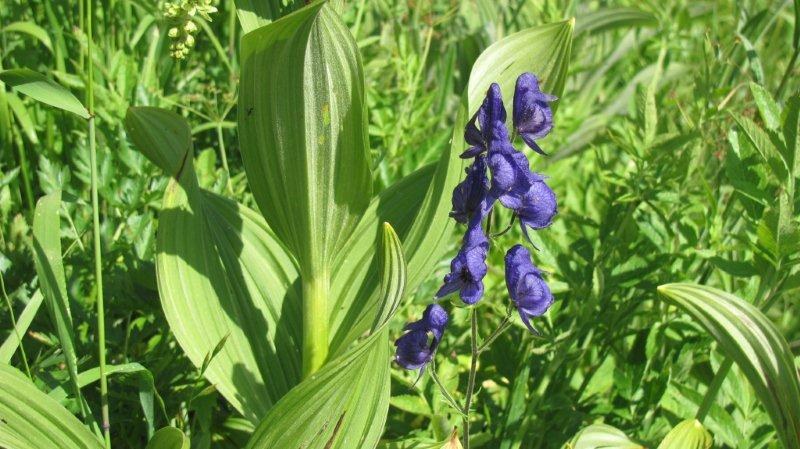
John Meyer joined me for this hike up one of Washington's 100 tallest peaks. We spent the night in Winthrop allowing us a jumpoff of 6:00 AM from the Wolf Creek trailhead. We planned on day-climbing the peak so with light packs we made quick time up to Gardner Meadows some ten miles in. The meadows offered wet ground with plenty of sun that is favorable habitat for monkshood. The poison of monkshood was used by the Alutiiq of Alaska to poison harpoon tips for whaling. http://www.lastwordonnothing.com/2012/04/20/the-secret-weapon/ Once in the meadows we continued hiking on the trail until reaching a campsite with a wooden bench on the left at 5,600ft. That is where we changed from comfortable trailshoes to boots and pushed the up button to ascend the southern flank of Gardner on a NW course. The going is straightforward and at this late date snowfree. Being snowfree means one is then confronted with the scree that has gained notoriety for both Gardner and its sister peak North Gardner. It is unnerving to gain 12 inches of elevation and then lose 4 of those inches. We had originally thought about adding North Gardner to the day's ambitions. When reaching the top of Gardner if I had found the energy for the taller peak I certainly did not have the water for the endeavor. The route up North Gardner included much of the same scree that was our miserable companion below. East Gardner actually looked taller so we spent time scrambling over there before giving up on the foolish side trip. Three benchmarks are on Gardner identifying it as the true summit.
We descended along a different line which had more scree. On the descent the scree is advantageous as it cushions the bootfall. We made a bee-line for the campsite and our trailshoes. On the return trip back to the car we happened upon, aside from deer, the only wildlife encountered for the day, a rubber boa. Rubber boas are the northernmost representatives of the constrictor family. They are quite docile and move sluggishly even when touched. One was laying across the trail appearing as a pale-green stick. I poked it to evoke a defensive posture it has evolved. The head and tail of the rubber boa are notably similar in appearence both being small and tapered. When provoked the snake will curl up in a ball and wiggle its tail as a decoy above the body at the uppermost portion of the ball. A small animal like a shrew or mouse will perhaps attack the tail erroneously perceiving it to be the head. Often that is a fatal mistake as the snake will then coil around the animal for its next meal. Here is more information http://www.californiaherps.com/snakes/pages/c.bottae.html In addition to being educational it allowed us a few minutes of rest during our retreat to the car. Distance travelled; 25 miles Elevation gain; 6,700 ft Car-to-car; 13 1/2 hrs






Comments